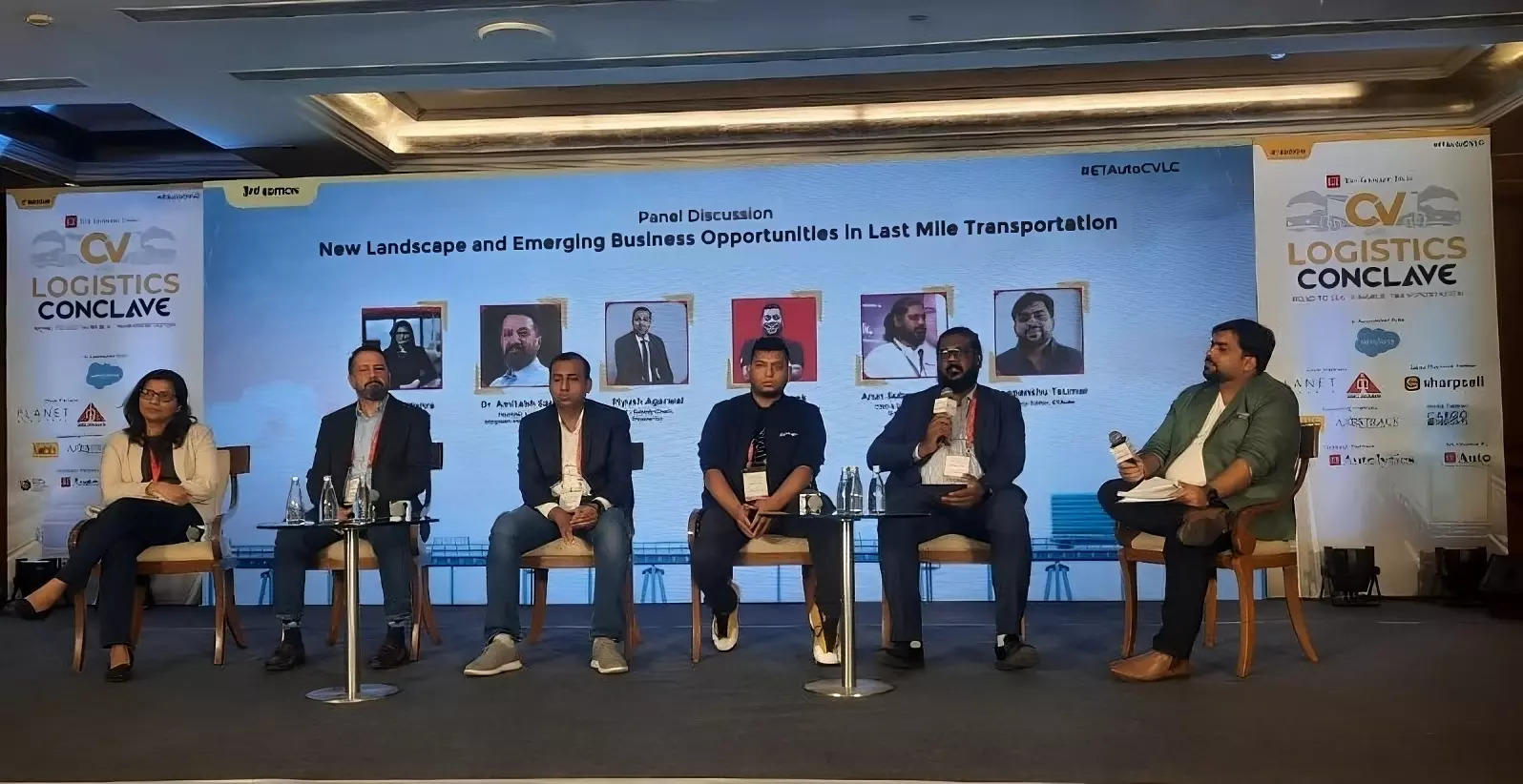
New Delhi: Remember the last time you waited for weeks for your e-commerce parcel? No, right? Nowadays the connectivity has boosted a lot that you can get your orders/parcels within a few minutes like from Zepto, Blinkit, and within a day or two from Amazon, Flipkart, and other sites.
This is due to the powerful last mile mobility delivery or logistics and how now nearby shops are part of this delivery pattern. Now the logistics pattern has transformed, the delivery vehicles have also expanded from heavy commercial vehicles like trucks, railways, ships to light commercial vehicles like two wheelers and rickshaws. This also highlights the importance of electrification in the last mile mobility.
Piyush Aggarwal, Pepperfry says damage free products for customers from distribution centres are more important than whether we should be delivering x quantities or optimizing the route according to our algorithms. To prevent such damages, last mile mobility companies have to take part in it, at the Economic Times’s CV and Logistics Conclave 2024.
The logistics though has become a powerful tool to fulfill the customers needs quickly but the electrification of these vehicles used can be seen less. The untapped electrification of logistics is due to several factors, says Suman Mishra, MD & CEO Mahindra Last Mile Mobility. “Let’s say, if we could possibly be moved to electric transportation but there is a lot more work that needs to be done both in terms of the charging infrastructure, the size base of the vehicle and how it can meet the needs of this kind of customer.”
However, she further highlights that e-commerce has commenced the electrification trend by bringing e-rickshaw cargos. Talking more about it, she says it is a very rational and scientific process to switch to electric vehicles for logistics.“Now OEMs are doing everything from data analysis plus optimization plus charging behavior plus service. So it’s really becoming more and more around solution providing rather than just vehicle providing because it is new.”
The escalation of last mile mobility happened post COVID-19, now the e-commerce websites provide the users with their necessities within minutes, hours and days. This revolution has occurred due to the connectivity boost, believes Amitabh Saran, CEO and Co-founder of Altigreen Propulsion Labs. “ Distribution centers have become Kirana stores from where things are now getting distributed to your home…. I think two wheelers and micro mobility have helped a lot,” he says. This change is now being observed in heavier vehicles like larger three wheelers and four wheelers too he further adds.
To accelerate this electrification, a good charging infrastructure is a necessity. Thus having a larger battery pack is not that necessary, what is crucial is how to do rapid charging. Rapid charging fundamentally solves everyone’s problem, which is the end users problems, OEMs problems and charge point operators problems, says Arun Vinayak, Co-Founder, Exponent Energy.
Arun Subramanian, CBO and Co-Founder Sharpsell.ai, believes instead of doing analysis we should give solutions to implement it practically, that is where we are lacking. Further talking about charging infrastructure he says, we don’t believe in hub-based charging. “We just really believe in the choice and the flexibility and freedom to end users on a daily basis on an on demand basis…. I think energy can’t be constrained, we believe energy needs to come to you, energy comes to you really quickly.”
Last mile mobility can be strengthened and become cost effective with good route optimization. Route optimization refers to the process of finding the quickest and most cost-effective route from delivering to Point B from Point A. This can be understood similar to how normally people use google maps to find the shortest or traffic free route. Piyush Aggarwal, believes the issue of road optimization has now been solved in recent years, with the advanced technology available via new age players which was missing earlier. He further says it saves fuel, maintenance costs, aids in prevention of accidents, track the vehicles route, aid in fuel theft and alot more.
Talking more about the reason why the three wheeler category has observed a great response for being an electrified fleet Suman Mishra adds about the solution providing opportunity to the companies. “It is a software and data dense business which allows us to provide solutions that really answer the customers’ needs.” She says in context to the data that has been collected by the OEMs which aids the fleet operators to understand the cause and then find appropriate solutions to it.
Altigreen believes driving behavior can change the efficiency of the overall vehicle by about 30%. Using the data to figure out how we can optimize it so that driving behavior can also be used as part of the equation instead of talking only about the products which carry only 2-3% weight is crucial, says Abhimanyu.
“At every edge of the value chain, we are seeing innovation equals the recycling ecosystem providers they are now have also emerged. So it is completely evolving. Five years down the road, you will see a totally different connected industry, which hopefully all going well really propels it into sustainable last mile mobility,” says Suman Miishra when talking about the future of last mile mobility.

















